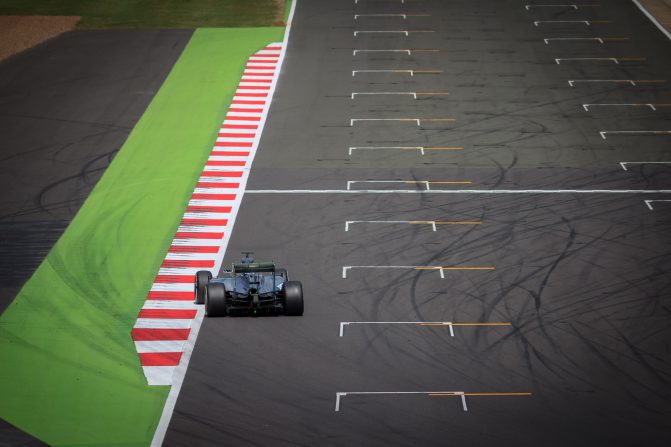In this modern age of supreme F1 safety, it feels a lot like we still have one remaining final frontier. That is, the cockpit with the driver’s still-exposed head. And it’s easy to see why. The issue’s been hot ever since Felipe Massa fought for his life after being hit on the head by a spring from another car in Hungary in 2009, as well as Henry Surtees’s tragic death in a similar incident in an F2 race days earlier. Indeed, the FIA Institute has been investigating solutions, mainly covering the cockpit totally with a full canopy, or else adding some kind of structure around the cockpit, since 2011.
There have been near misses since too, such as Romain Grosjean’s Lotus getting oh-so-close to Fernando Alonso’s cockpit in Spa in 2012. And following that one Paddy Lowe, then of McLaren, expressed his belief that additional cockpit protection is “inevitable” for F1 cars.
And idea whose time has come?
We’re still without them but the issue has not gone away, and now it looks like the ‘inevitability’ that Lowe predicted is coming to pass. In Monza last September, while there was the odd objector, there was a clear majority of drivers now in strong favour of this added cockpit protection. It came a few days after Justin Wilson’s death in an Indycar race when debris again hit the driver’s head. Jules Bianchi’s recent passing, although his accident would not have been helped by cockpit protection, also understandably concentrated minds.
Jenson Button, encapsulating the shifting view, said: “It is time. I am one of the people who have always said it is an open-cockpit formula, but I don’t care about that any more. It has been too much over the last couple of years. We have lost some amazing talent in the sport and some amazing individuals.”
The FIA’s race director Charlie Whiting added that he could “definitely see the day” that one of the two solutions would be reality in F1. Sure enough recent reports say the FIA is to present its favoured solution to teams, and that a ‘halo’ structure around the cockpit is the preferred one.
And yet I can’t help but wonder if by solving one problem we run the risk of creating a load more.
Questions to be answered – F1 Cockpit Halos
Some of the common arguments against can be dismissed immediately, such as them ‘not being F1’ (whatever that means) and their unsightliness (if we can get used to the ‘Ann Summers’ noses within half an hour of pre-season testing in 2014 then we can get used to anything).
But to take the cockpit canopy idea, will it make driver evacuation after an accident, or in a fire or when fuel or something else unpleasant gets into the cockpit, more difficult? If the car rolls will these become even more troublesome? And what if the driver needs medical attention urgently, will the presence of a canopy add vital seconds? Testing of them also identified the potential problem of deflecting wheels into the crowd.
And with the ‘halo’, would they have similar problems as explained for the canopy in terms of cockpit evacuation and intervention? And again what happens in the event of a car rolling? Is there a chance that the structure would collapse into the cockpit and thus injure the driver that way? Could they add to dangers by impeding drivers’ vision, particularly where they have to look up such as exiting Eau Rouge?
As Gary Anderson argued lately too, “it is being conceived for one type of incident: a loose wheel and tyre. It will do nothing to reduce the risk of head injury when smaller objects are flying around”. One thinks of the Massa accident mentioned, it was a small spring that hit his helmet which the halo is unlikely to have deflected.
Also, would a larger piece of debris shatter upon contact with the halo? The consequences in that scenario are obvious and chilling. We see repeatedly that F1 carbon fibre can shatter easily.
Admittedly though as Anthony Davidson explained recently that while the halo is “not ideal” no solution is going to be. They’ll all have their downsides, it’s a matter of balancing them out; land on the least worst option as it were. Similarly as outlined the FIA has been investigating the matter for years and whatever else you think of the FIA it is known for being very active and thorough on safety matters. The exceptionally clever F1 designers will have had their input too. Whiting also has said the solutions’ positives “significantly outweighed” the negatives. But I’ll be looking for answers to a few of the concerns outlined. While some of the arguments against these moves are knee-jerk, one risks being equally knee-jerk in making a change – concluding that something must be done, this is something, so let’s do it.




